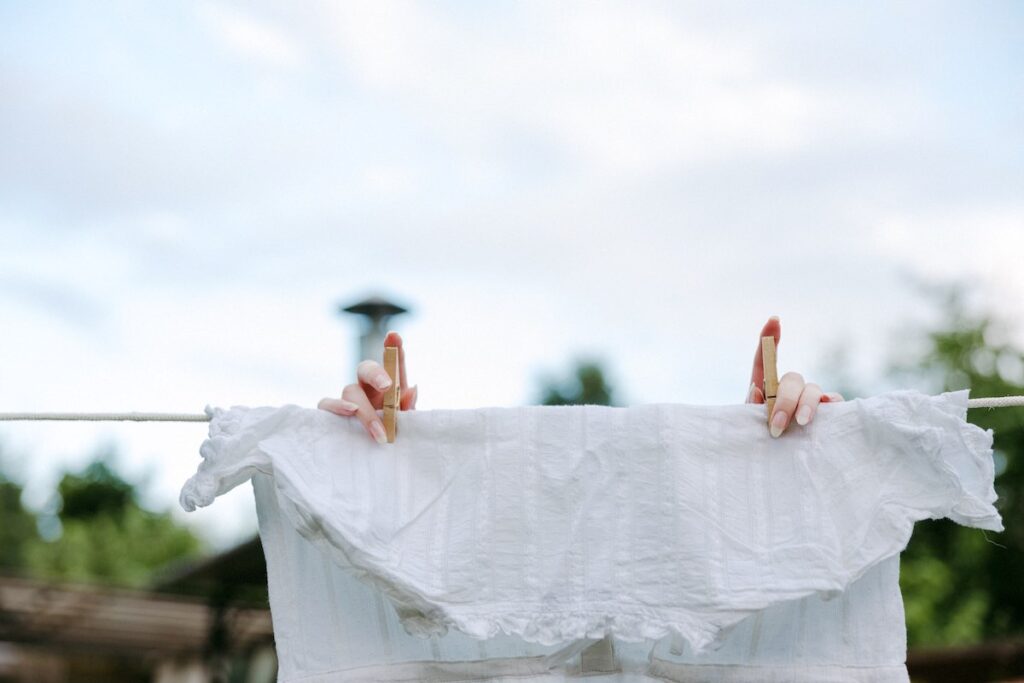In many parts of the world, the winter months bring cold and wet weather, making it difficult to dry clothes outside. As a result, many people resort to hanging their wet laundry indoors, close to heaters, in an attempt to get them dry. While this may seem like a practical solution, it can have serious consequences on your health, energy bills, and the environment. In this comprehensive article, we will explore the reasons why you should not dry your clothes inside near heaters and provide alternatives to ensure your laundry dries safely and efficiently.
Health Hazards of Drying Clothes Indoors
Allergies and Asthma
Research conducted in Scotland found that drying clothes indoors can be detrimental to your health, particularly for those suffering from allergies and asthma. When clothes are hung inside, the excess moisture creates a damp environment, perfect for mold spores and dust mites to thrive. These allergens can trigger symptoms in individuals susceptible to allergies and asthma, leading to increased discomfort and potential health complications.
Cancer-Causing Chemicals
Another alarming finding from the Scottish study is that when clothes washed with fabric softeners are dried indoors, they can release cancer-causing chemicals into the air. As these harmful substances evaporate, they mix with the indoor air, posing a potential health risk to the occupants of the house.
Economic and Environmental Consequences
Increased Energy Bills
Contrary to popular belief, drying clothes indoors near heaters can actually increase your energy bills. When wet laundry is hung inside, the heaters need to work harder to maintain the room temperature, consuming more energy in the process. It may be more cost-effective to use a clothes dryer, which dries clothes quickly and efficiently, rather than relying on indoor heating.
Environmental Impact
The excessive energy consumption associated with drying clothes indoors not only raises your energy bills but also contributes to a higher carbon footprint. Increased energy usage results in higher greenhouse gas emissions, which have a detrimental impact on the environment.
Safe and Efficient Alternatives for Drying Clothes
Drying Clothes Outdoors
Whenever possible, it is best to dry your clothes outdoors. The natural sunlight and breeze will help to evaporate the moisture from your clothes, leaving them fresh and dry. This method is not only healthier but also more energy-efficient and environmentally friendly.
Using a Clothes Dryer
If the weather does not permit outdoor drying, using a clothes dryer is a more economical and healthier option than hanging clothes indoors near heaters. Modern clothes dryers are designed to be energy-efficient and can dry your clothes quickly while reducing the potential health risks associated with indoor drying.
Energy-Efficient Dryers
When purchasing a clothes dryer, look for models with an Energy Star rating, indicating that they are energy-efficient. These dryers use advanced technology to minimize energy consumption while still providing effective drying performance.
Sensor Drying Technology
Some clothes dryers are equipped with sensor drying technology, which automatically detects the moisture level in your clothes and adjusts the drying time accordingly. This feature ensures that your clothes are not over-dried, which can damage the fabric, and helps to conserve energy.
Proper Ventilation for Indoor Drying
If you must dry your clothes indoors, it is essential to ensure proper ventilation to minimize the health risks and energy consumption associated with this practice.
Opening Windows
When drying clothes indoors, make sure to open windows to allow fresh air to circulate. This will help to reduce the humidity levels in your home and prevent the growth of mold and dust mites.
Using a Dehumidifier
A dehumidifier can help to maintain a healthy indoor environment by removing excess moisture from the air. Running a dehumidifier in the room where you are drying your clothes will help to minimize the risks associated with indoor drying.
Maintaining Indoor Air Quality
Regular Cleaning
To reduce the allergens in your home, it is essential to clean regularly. Vacuum carpets and upholstery, dust surfaces, and wash bedding to minimize the presence of dust mites and mold spores.
Air Purifiers
Using an air purifier can help to improve indoor air quality by capturing airborne allergens and pollutants. Look for a purifier with a HEPA filter, as these are designed to remove even the smallest particles from the air, including mold spores and dust mite allergens.
In Conclusion
Drying clothes indoors near heaters may seem like a convenient solution during the cold and wet months, but it can have serious consequences on your health, energy bills, and the environment. By exploring alternative methods for drying your clothes and ensuring proper ventilation and indoor air quality, you can minimize these risks and keep your home healthy and comfortable.
Remember that drying your clothes outside or using an energy-efficient dryer are the best options for you and your family’s well-being. Stay informed, make smart choices, and enjoy a healthier and more sustainable lifestyle. If you experience more serious issues with your clothes dryer it’s important to call a professional Manly Dryer Repairs company such as Manly Appliance and Electrical – contact us below:
For more handy Pre-Service Checks page.
To book in a service, visit our Appliance Servicing page.


